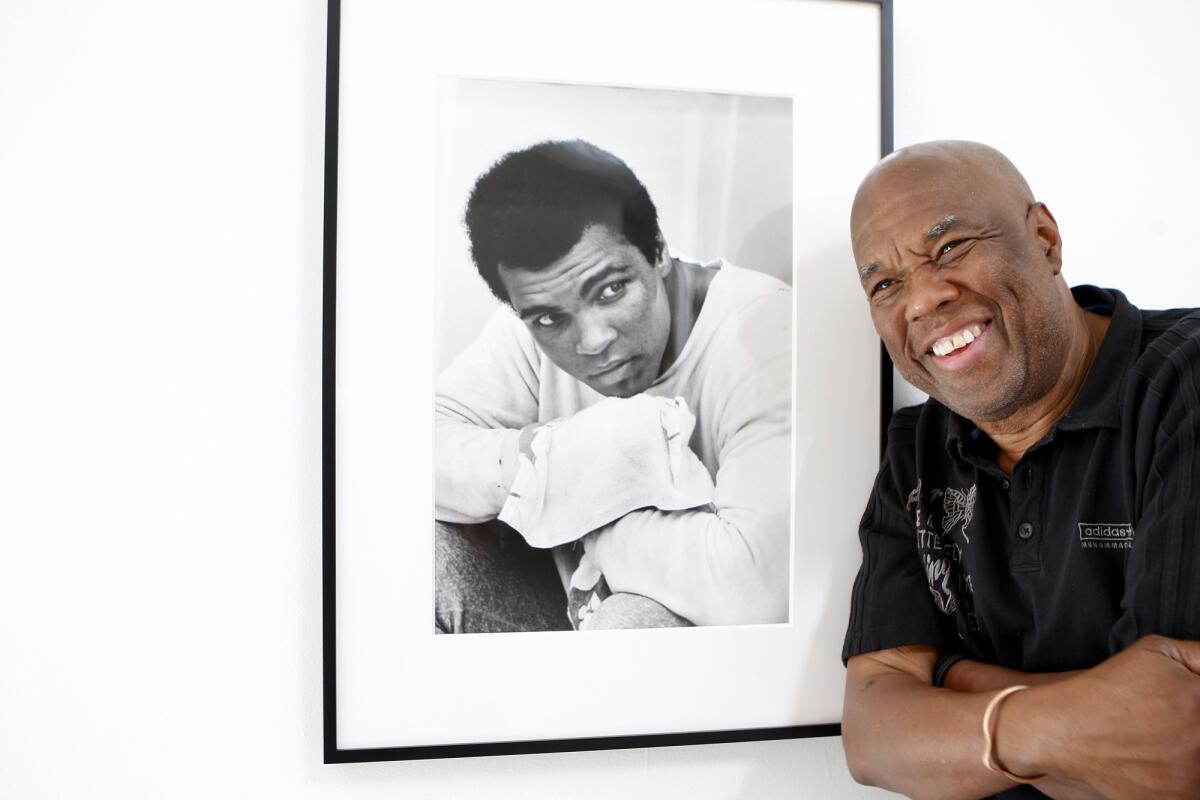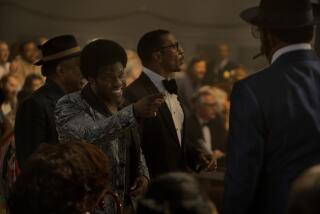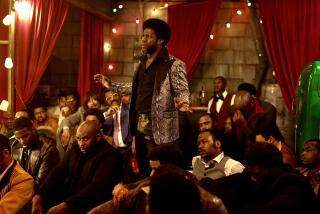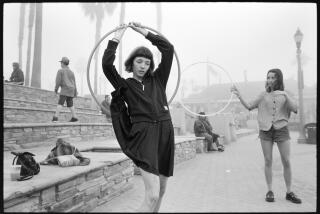From the archives:: Muhammad Ali: Images of an icon and a friend

Howard Bingham, Muhammad Ali’s photographer, talks about the “Rumble in the Jungle,” on a walk through the M+B Gallery in Hollywood on May 22, 2008.
In a restaurant near Phoenix last weekend I looked up and there was Muhammad Ali, slowly easing past my table.
Everyone knows that Parkinson’s disease has stolen much from this once mightiest of men. But witnessing the toll up close, seeing him shuffle by, arms shaking, back bent, brings about sorrow and pain.
Returning to L.A., I wished to remember a different Ali, an Ali healthy and youthful and magnetic, near the peak of his formidable powers.
This led me to Howard Bingham, a photographer and lifelong resident of South Los Angeles who for 46 years has played dual roles for boxing’s most revered icon: Bingham has long been one of Ali’s closest and wisest friends. And, through his vibrant photographic images, he has also been the prime chronicler of the great boxer’s life.
As it happens, Bingham’s work is the subject of a retrospective, “The Rumble in the Jungle,” currently showing at the M+B gallery in Hollywood until the last day of this month.
The exhibit, featuring signed reproductions for sale, focuses on one of the seminal moments in boxing history: the dramatic heavyweight bout held in Kinshasa, Zaire, in 1974, Ali against George Foreman.
Bingham, a round-faced, soft-spoken 68-year-old who walks with a limp, met me at the gallery last week, ready to sift through his memories.
“Feels like all of this happened just yesterday,” he said, stepping gingerly into the white-walled complex.
In 1974, he reminded, it was figured that the snarling, unimaginably powerful Foreman would devastate Ali, who at 32, possessed greatness still but was on the downside of his career.
However, from the moment Ali and his troupe of followers laid foot in Africa that fall, eight weeks before the bout, Bingham felt something special was on its way.
He paused by a row of photographs. One showed Ali, round eyed and energetic, at a welcoming parade, wading through a stadium filled with adoring fans. Ali was beloved. Foreman, because of his snarl, and because he showed up in Africa with a German shepherd , a symbol of harsh colonial rule, was despised. At the welcoming parade, Bingham said in a subdued voice, the African fans rhythmically chanted: Ali, bumbaye! Ali, bumbaye! Ali, kill him. Ali, kill him.
He walked past color shots of the first days in Africa, past black-and-whites of training days and of Ali relaxing and Ali with a legion of followers, Norman Mailer and James Brown among them.
The photographer remarked that he knows these images like he knows his own signature, yet he is surprised to find that he sometimes makes new discoveries: the doleful look in a soldier’s eyes, the joy of a child lifted toward the sky by Ali.
Always, his thoughts return to Ali. “He was always clowning,” Bingham said, standing in front of one of his favorite of the photos, a playful Ali thrusting a big fist toward his cameraman.
But this fight was no joke. Some thought Foreman might kill Ali — literally.
We walked by a picture of Foreman, muscles flexed. Bingham cringed. “Look at that bicep,” he said. “Ouch.”
Bingham said he worried about Ali as he trained. Ali was always on the ropes. “We didn’t know what he was doing, having all of these guys pounding him in the gut and the arms.” The Champ didn’t let on that he was readying himself for the “rope-a-dope,” his stealthy plan to let Foreman punch away in the early going, tiring himself out.
Finally, Bingham entered a room with images of fight night.
“I’m not a boxing photographer, really,” he said, his voice a whisper. “This is eight rounds and I do not have a lot of pictures I should have. You see when he got hit, I got hit, and I don’t take pictures when he got hit, because that’s my friend. . . . Boxing is brutal. I have always said that, told him that many times.”
What would he say in return?
“He knows.”
The conversation turned back to that glorious night. Bingham, who sometimes stutters and usually prefers to remain in the quiet background, livened up. He began pantomiming Ali in the ring, circling, throwing jabs.
“Right here, you know it is pretty good because it seems like he is in control and he is doing what he wants to do . . . he was on the ropes for a while and now he is doing what he wants.”
He stopped. There was one more image: Ali standing, Foreman on the canvas, a knockout victim.
“Come on, sucker,” Bingham said. “Get your ass up!”
The feeling at that moment, on an early October morning in Africa, 1974, was pure joy.
Today, Ali’s hard struggle in full view, that feeling is muted by our concern and sadness. Bingham said that yes, he gets this feeling too, at least a touch of it, when he walks the gallery.
But Ali calls Bingham a wise man for a reason. The photographer’s philosophy can be reliably summed up this way: We should remember great moments, savor the past, and then we should move on, accepting the present.
“Nobody is the same as they were,” he said. “We all wish we could be the way we were before. . . .
“And remember, when you look at those photographs, that today Ali is happy. He does what he wants to do, he is traveling, living life the way he wants, and still having fun.”
Note: This article was originally published on May 25, 2008.
More to Read
Go beyond the scoreboard
Get the latest on L.A.'s teams in the daily Sports Report newsletter.
You may occasionally receive promotional content from the Los Angeles Times.











